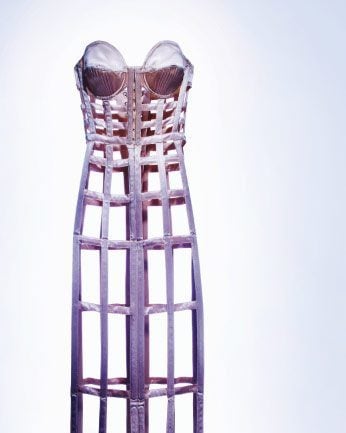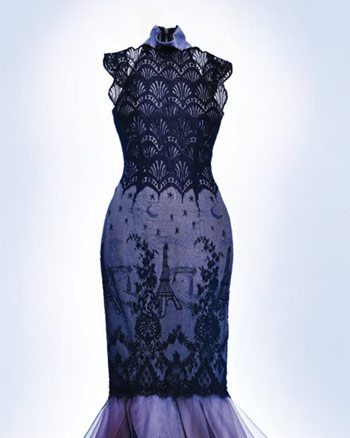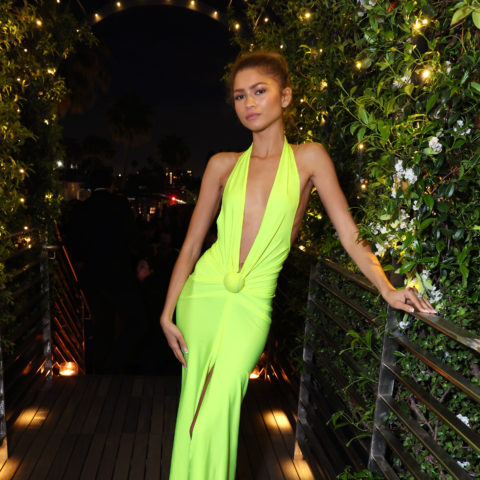The Provocateur: After 35 cheeky years in the business, life is still a cabaret for couturier Jean Paul Gaultier


Jean Paul Gaultier isn’t crazy about career retrospectives. “I think they can be like a funeral sometimes,” winces the original bad boy of fashion, who turns 60 next year. We are sitting on the stage of Gaultier’s Rue Saint-Martin headquarters, where his punk-themed Spring 2011 couture collection has just been unveiled. Models strutted down the runway in his sailor-striped organza and leather lace bombers to a voice-over of Catherine Deneuve describing each exquisite outfit, rather than music. Almost everyone—including boy bride Andrej Pejic—was coiffed in some riff on a mohawk, and Gaultier himself came bounding out to take his bow in a spiked wig.

There are much badder boys in fashion these days. But none so well humoured, or so French. Cancan ruffles, berets and Breton stripes have all been treated to Gaultier’s witty twists. He’s the master of mash-ups—whether they’re masculine/feminine, innerwear/outerwear, or a blend of cultural symbols from thousands of miles, or years, apart. In Gaultier’s hands, red, yellow and blue feathers give a jacket parrot wings, corsets become cage dresses, and battery-operated butterflies flutter around the bodice of a gown. He has put men in skirts and bustiers, and riled Christians with Virgin Mary prints and Sacred Heart embroidery. After presenting a 1993 collection inspired by Orthodox Jewish costume, a jaunty Gaultier was interviewed wearing a sailor-striped skullcap. That didn’t go down well with the Jewish community.

But through all the kinky couture and controversy, Gaultier never let his tailoring or technique slip. So the Montreal Museum of Fine Arts curated a remarkable body of work, spanning his 35 years in business, for The Fashion World of Jean Paul Gaultier: From the Sidewalk to the Catwalk. The show, running from June 17 to Oct. 2 in Montreal (before heading to Dallas and San Francisco), will feature 120 couture and ready-to-wear ensembles, along with runway footage, sketches, stage costumes and film excerpts illustrating Gaultier’s many artistic collaborations.
But don’t expect your typical sombre museum affair. A Gaultier presentation is often full of surprises—Madonna pushed a puppy in a baby carriage down his fall 1994 runway—and curator Thierry-Maxime Loriot has ensured a multimedia treat. Mannequins enhanced by video projections (created by Montreal theatre company UBU) include a talking Gaultier and celebrities like Québécoise model Ève Salvail and musician Melissa Auf der Maur. The exhibit will be divided into six stylistic themes, most notably The Boudoir, a signature made famous by Madonna, who put Gaultier’s cone bra on the global stage.
Bringing lingerie out into the open at a time when women were confident enough to wear it is just one example of Gaultier’s alignment with societal shifts. “The moment when I started to do fashion was after women had thrown away their bras in revolt and were ready to put them back on again because they chose to,” explains the designer, who launched his business in 1976 after working for Pierre Cardin and the House of Patou. His notion of pairing bustiers with business suits came to be an ’80s symbol of women’s advancement up the corporate ranks. For Gaultier, the “obsession” with lingerie started much earlier, when he was growing up in the suburbs of Paris. “I was a little boy, maybe seven or eight years old, and I saw my grandmother’s corset in an armoire,” he recalls. “It was flesh-coloured and laced, and I said, ‘What is that?’ She put the corset on and explained that it makes your waist very, very thin. And you know what they were doing at the beginning of last century? They were taking a glass of vinegar, hiccup, to have a contraction of the stomach,” he says, “and then you really pull it. So it was like a pulley system to make the waist very, very small.”

Years later, in the ’80s, Gaultier was watching a Broadway play in New York called Nine. The play was terrible, he says, laughing, but it didn’t matter because a scene in which the burlesque showgirls are backstage in their corsets got his wheels spinning. “That’s when I thought, ‘Ah, it’s fabulous! I have to do something like that. But I’ll make it a dress—a short dress, a long dress and even a jumpsuit. I will make all kinds of different corsets.’ Afterwards I sketched and I sketched, and voila. I was obsessed,” he says.
Following his instinct has driven Gaultier in some extreme directions—the sex shops of Pigalle are an inspiration, and he has endured some criticism for producing “unwearable” designs. But often, the general public just needed to catch up with Gaultier’s imagination. Today, no one would bat an eye at the trompe l’oeil “tattoo” tops he introduced in the mid-’90s.
Gaultier has also been lucky to have a successful string of fragrances to help buoy his business. That, and the savvy to offer beautifully cut suits and elegant trench coats amid the edgy headline grabbers, has enabled him to endure. “Fashion is not an art,” he says. “It’s an answer to what people desire, what they want, what they need. It’s a response to the evolution of society and to its mentality. Art is different. We’re selling clothes. Even with couture, which is not an industry, it’s still dressing the body. It’s still technical. You cannot be completely free creatively. We must have some element that is sellable. If not, you die.”







